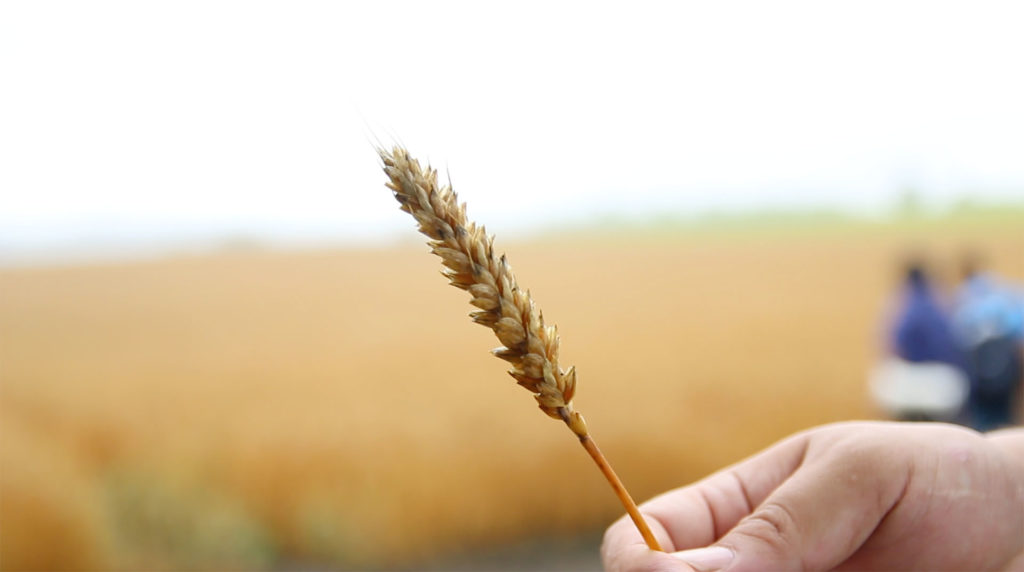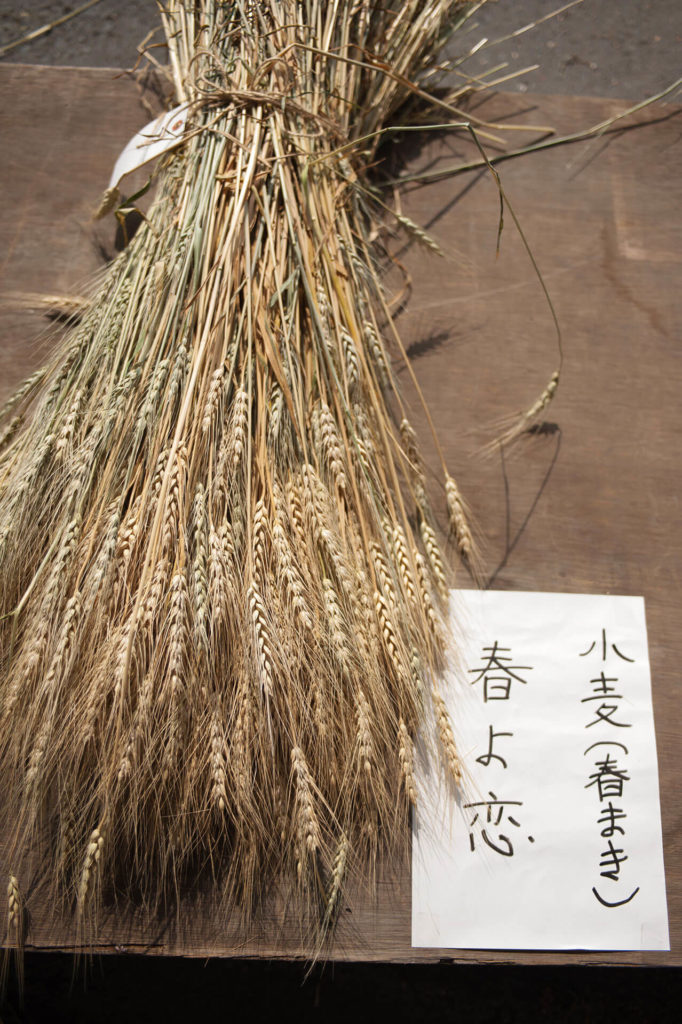WHEAT
Kitami is the leading production area of wheat in Hokkaido
WHEAT
Kitami is the leading production area of wheat in Hokkaido
The production of wheat in Hokkaido
Hokkaido is proud of wheat output which accounts for more than 60% of the national output. Being famous for onions and white flower beans, Kitami is the leading production area of wheat in Hokkaido, too. The Okhotsk area accounts for about 38% of Japanese planted acreage and the crop ranks high in Japan.
The production of wheat in Hokkaido

Hokkaido is proud of wheat output which accounts for more than 60% of the national output. Being famous for onions and white flower beans, Kitami is the leading production area of wheat in Hokkaido, too. The Okhotsk area accounts for about 38% of Japanese planted acreage and the crop ranks high in Japan.
Winter wheat

Winter wheat is sown late September and pass the winter under snow with the grown body to grow more right after snow melting. Because the grown wheat spend the winter under snow alive, it sometimes happens that the leaves die. Nevertheless, there are many advantages that the growth starts from the season when it is hard to start farming and that it is possible to sow the seeds avoiding busy season in spring. Most of the cultivars are for udon noodles. The varieties change once 10 years, and the mainstream is ‘Kitahonami’ now.
Winter wheat
Winter wheat is sown late September and pass the winter under snow with the grown body to grow more right after snow melting. Because the grown wheat spend the winter under snow alive, it sometimes happens that the leaves die. Nevertheless, there are many advantages that the growth starts from the season when it is hard to start farming and that it is possible to sow the seeds avoiding busy season in spring. Most of the cultivars are for udon noodles. The varieties change once 10 years, and the mainstream is ‘Kitahonami’ now.
Spring wheat
Spring wheat is used for bread flour, which means bread and Chinese noodles. Usually the seeds are sown in spring as the name shows. The cultivation way to sow them before snowing is called the ‘early winter sowing’ skill. The seeds sprout under snow and start growing at the time of snow melting. That is why the period of growth from sprouting to harvest gets longer and each grain grows bigger. Although wheat hates raining after the ears form, the early winter sowing also made harvest time earlier, so that the period to be exposed to rain gets shorter. The mainstream of the varieties is ‘Haruyo-koi’ now.
Spring wheat

Spring wheat is used for bread flour, which means bread and Chinese noodles. Usually the seeds are sown in spring as the name shows. The cultivation way to sow them before snowing is called the ‘early winter sowing’ skill. The seeds sprout under snow and start growing at the time of snow melting. That is why the period of growth from sprouting to harvest gets longer and each grain grows bigger. Although wheat hates raining after the ears form, the early winter sowing also made harvest time earlier, so that the period to be exposed to rain gets shorter. The mainstream of the varieties is ‘Haruyo-koi’ now.